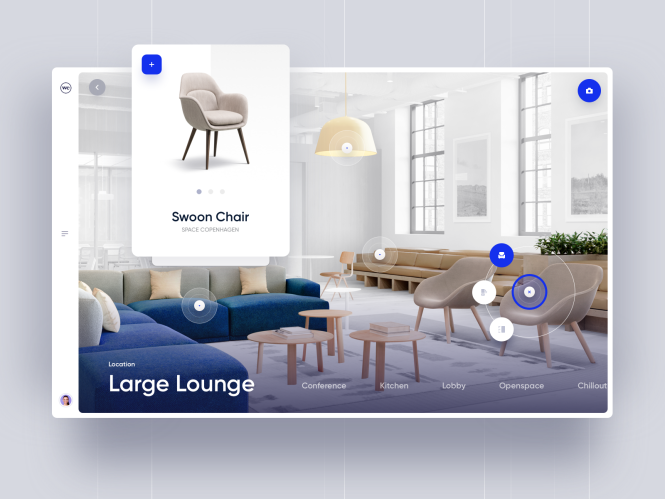

Discreet Technology Interior Design is rapidly transforming the way we think about living spaces. Gone are the days of bulky electronics and visible wiring; the modern home embraces seamless integration of technology that enhances comfort and convenience without sacrificing aesthetic appeal. Many homeowners and designers struggle with balancing the desire for smart home attributes with maintaining a clean, uncluttered look. This article will explore how discreet technology seamlessly blends functionality and design, offering solutions to this very problem. We’ll examine several key areas of discreet technology implementation, providing examples and insights into creating stylish and technologically advanced interiors. Let’s delve into the exciting world of hidden technology and its impact on modern design.
Hidden Technology for Enhanced Comfort
Smart Lighting Solutions
Integrating smart lighting systems is a cornerstone of discreet technology interior design. Imagine a living room where lighting subtly adjusts to the time of day, creating a calming ambiance in the evening and bright, energizing light during the day. This is achieved through recessed lighting fixtures and smart bulbs that can be controlled via a smartphone app or voice assistant. The technology is hidden, yet its impact is transformative. Philips Hue, for instance, offers a wide scope of customizable smart bulbs that allow for precise color temperature and brightness control.
Discreet Audio Systems
High-fidelity audio is no longer limited to bulky speakers. Today, discreet audio systems are seamlessly integrated into walls, ceilings, or even furniture. In-wall speakers offer immersive sound without visual clutter. This approach is ideal for creating dedicated home theaters or music listening areas that are both stylish and acoustically impressive. Companies like Sonance offer sophisticated in-wall and in-ceiling speaker solutions designed to be virtually invisible.
Concealed Climate Control
Maintaining a comfortable temperature is paramount for a pleasant living experience. However, traditional heating and cooling systems can be unsightly. Discreet technology offers solutions. Consider the use of underfloor heating systems, which distribute warmth evenly through the floor, eliminating the need for bulky radiators. Similarly, ductless mini-split systems are remarkably compact and can be hidden away in closets or utility rooms, maintaining a clean, modern aesthetic.
Seamless Technology Integration in Modern Kitchens
Smart Appliances and Hidden Controls
The kitchen is often the heart of the home, and integrating discreet technology here can greatly enhance functionality and convenience. Smart appliances like refrigerators with built-in touchscreens allow for inventory management and direct ordering of groceries. However, the true magic of discreet technology lies in hidden controls. Imagine a kitchen island with a smooth, uninterrupted countertop that houses touch-sensitive controls for lighting, ventilation, and even the audio system. This eliminates the visual clutter of switches and knobs, maintaining a minimalist design.
Automated Storage and Organization
Incorporating automated storage solutions, such as motorized cabinets or hidden pantries, can maximize space and streamline workflow. These systems can be controlled with a smartphone app, allowing you to easily access stored items without the need for extensive rummaging. This element of surprise and convenience elevates the kitchen experience, creating a sophisticated and efficiently designed space.
Wireless Charging Stations
Keeping your devices charged without a tangled mess of cables can be challenging. Discreet wireless charging stations seamlessly integrated into countertops, tables, or even within furniture offer a clean solution. These charging pads maintain a clean and elegant aesthetic, eliminating the need for visible cords while simultaneously keeping your devices powered.
Discreet Home Automation for Enhanced Security and Convenience
Smart Security Systems
Security systems are essential, but their components can be visually intrusive. Discreet technology offers a solution. Integrated smart security systems use hidden sensors, cameras, and other devices to offer thorough protection without compromising the aesthetic integrity of the space. These systems often include attributes such as motion detection, remote monitoring, and integrated alarm systems. The focus is on security and functionality, yet the design remains sophisticated and clean.
Automated Window Treatments
Controlling window treatments can enhance privacy and regulate natural light. Automated blinds or curtains, controlled via smart home technology, offer seamless integration and enhanced convenience. The systems can be adjusted based on time of day, weather conditions, or even personal preference, improving energy efficiency and creating the desired ambiance. This approach adds an element of luxury to the space, while subtly enhancing functionality.
Voice-Activated Control Systems
Voice-activated control systems are becoming increasingly sophisticated, offering hands-complimentary control over multiple facets of the home environment. These systems allow you to control lighting, audio, climate, and security with simple voice commands. The beauty of voice-activated systems lies in their discreet nature; the technology is almost invisible, yet its impact on daily life can be significant. This technology offers a personalized and efficient experience, simplifying everyday tasks within your home.
Choosing the Right Discreet Technology for Your Interior Design Project
Prioritizing User Experience
When selecting and implementing discreet technology, prioritize user experience. The technology should enhance comfort and convenience without being overly complicated or frustrating to use. select systems that are intuitive and easy to navigate, regardless of technical expertise. A well-designed system integrates seamlessly into daily life, rather than demanding excessive attention.
Ensuring Seamless Integration
The key to achievementful discreet technology integration is to ensure seamless integration into the overall interior design. The technology should complement the existing aesthetic rather than clashing with it. select products that are visually unobtrusive and that blend harmoniously with the existing décor. Consider the use of neutral colors and minimalist designs to maintain a cohesive look.
Considering Environmental Impact
In an increasingly environmentally conscious world, it’s crucial to consider the environmental impact of your technology choices. select energy-efficient products and systems that minimize their carbon footprint. Look for certifications and standards that ensure sustainability and responsible manufacturing. This consideration aligns with current design trends emphasizing environmentally friendly practices.
The Future of Discreet Technology in Interior Design
Advanced Materials and Miniaturization
The future of discreet technology in interior design lies in the development of advanced materials and miniaturization. As technology continues to advance, we can expect to see even smaller and more efficient devices and systems. This will allow for even greater integration and seamless integration of technology into living spaces. The next generation of discreet technology will be almost invisible, enhancing functionality without compromising aesthetics.
Artificial Intelligence and Personalization
Artificial intelligence (AI) is playing an increasingly significant function in the development of smart homes. AI-powered systems can learn user preferences and automatically adjust settings to maximize comfort and convenience. This personalized approach creates truly unique and customized living experiences. The technology anticipates needs, adapting to create a seamless and stress-complimentary home environment.
boostd Connectivity and Interoperability
boostd connectivity and interoperability between varied smart home devices are crucial for creating a cohesive and user-friendly experience. The future will likely see an boostd focus on seamless integration of devices and systems from various manufacturers. Open standards and protocols will play a key function in achieving this level of connectivity, creating a truly integrated and efficient home environment. This is essential for ease of use and maintenance of the whole system.
In conclusion, the integration of discreet technology in interior design offers a multitude of benefits, enhancing both aesthetics and functionality. By carefully selecting and implementing these technological marvels, designers can create spaces that are not only visually stunning but also incredibly user-friendly and efficient. Embrace this trend; it’s the future of interior design. Explore the options available to you and discover how discreet technology can transform your next project. Remember to consider user experience, seamless integration, and the long-term impact on the environment when making your choices.